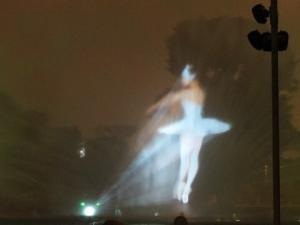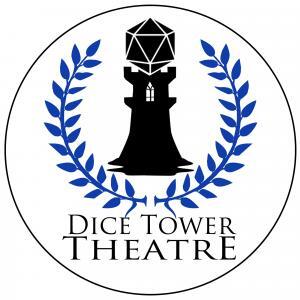Programmed Illusion
Bard, Wizard - 6 Level Spell
School: Illusion
Casting Time: 1 Action
Range: 120 ft
Components: Verbal, Somatic, and Material
Duration: Until Dispelled
Attack/Save: None
Reference: PH 269
You create an illusion of an object, a creature, or some other visible phenomenon within range that activates when a specific condition occurs. The illusion is imperceptible until then. It must be no larger than a 30-foot cube, and you decide when you cast the spell how the illusion behaves and what sounds it makes. This scripted performance can last up to 5 minutes.
When the condition you specify occurs, the illusion springs into existence and performs in the manner you described. Once the illusion finishes performing, it disappears and remains dormant for 10 minutes. After this time, the illusion can be activated again.
The triggering condition can be as general or as detailed as you like, though it must be based on visual or audible conditions that occur within 30 feet of the area. For example, you could create an illusion of yourself to appear and warn off others who attempt to open a trapped door, or you could set the illusion to trigger only when a creature says the correct word or phrase.
Physical interaction with the image reveals it to be an illusion, because things can pass through it. A creature that uses its action to examine the image can determine that it is an illusion with a successful Intelligence (Investigation) check against your spell save DC. If a creature discerns the illusion for what it is, the creature can see through the image, and any noise it makes sounds hollow to the creature.
The material component is a a bit of fleece and jade dust worth at least 25 gp. It does not get used up in the spell.
My Comments:
This will be the last post in my illusion series for a while. There is plenty more I want to say, but this is the last illusion in the book that is neither phantasm or shadow, which I will cover at another time.
Just like the other two (Silent Image and Major Image) this spell creates an illusion, but the range is longer, the area is another 50% larger, and this time, the duration is very nearly permanent. You create a specific trigger to set off the illusion, and it can run for up to five minutes, as if someone pressed play on a video player. Then the illusion resets until triggered again. It seems that this illusion could last forever, even past the caster’s lifetime, though you can dispel it as an action once you don’t need it anymore.
To be honest, I almost see this as a waste of a spell slot. This spell is pretty niche and probably not worth being in a player’s repertoire when they get to 11th level. Granted, illusionists will probably want access to this spell as the only Illusion spell at 6th level (unless you are using supplemental materials, especially Xanathar’s Guide to Everything for a useful Mental Prison spell). Still, it requires even more planning than the other Illusion spells, because you have to set the trigger when you cast it.
The usefulness of this spell for a player character is negated when you remember that you can spend a 6th level spell slot on Major Illusion to make it permanent. Unless you need the extra range or area, you may as well have a different spell in your prepared or known slots.
Primarily, I consider this spell something of a “downtime” spell. Something a wizard might cast in order to create illusions for entertainment purposes, or to show off. Want an illusory herald for anyone coming through your front door to announce the rules of the house? Use Programmed Illusion. Want to create some animated hedge-animals for your manor’s hedge maze to delight your guests? Use Programmed Illusion.

Photo art by Kathy
The only time I can remember, as a player, casting Programmed Illusion was back in AD&D 2nd Edition (we’re talking high school, people, which was a long time ago for me). Our party was acting as circus performers in order to infiltrate a royal wedding and my illusionist/thief crafted overlapping illusions that activated at command words during a part of his performance, to both distract and awe. Was it effective? Sure. Was it really effective beyond creating a nice show? Not in the slightest. The DM did appreciate my eye for detail and made our infiltration easier. One of our fighters still died in the process of escaping, but now I’m digressing…
“In combat situations, or more strategic ones, a Programmed Illusion may come in handy for intimidation or tricking your opponents if you have enough time to plan.”
In combat situations, or more strategic ones, a Programmed Illusion may come in handy for intimidation or tricking your opponents if you have enough time to plan. Again, as I said in my previous Illusion posts, trickery and diversion is the bread-and-butter of an illusionist’s playbook. It might be helpful to be able to create an illusion of an attacking monster once you say a particular command word while negotiating or intimidating an adversary. Those rival adventurers decide that they’d rather attack than negotiate? Just say “Oh bother!” in your best Winnie the Pooh impersonation and that pack of trolls coming around the corner could give you all you need to take the upper hand.
Again, though, this is not a spur of the moment spell. Using it to create that Wall of Fire we keep talking about is a waste of a spell slot. You may as well keep a Major Image in your back pocket for that.
So now that I’ve wracked my brain for more uses of Programmed Illusion, I’d love to hear from everyone else about what ways they have used – or can conceive of using – this spell. Reach out in the comments, I’d love to start a thread on the merits of the School of Illusion in general.

